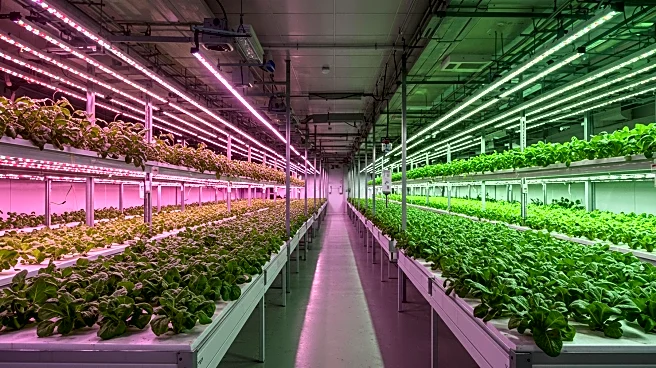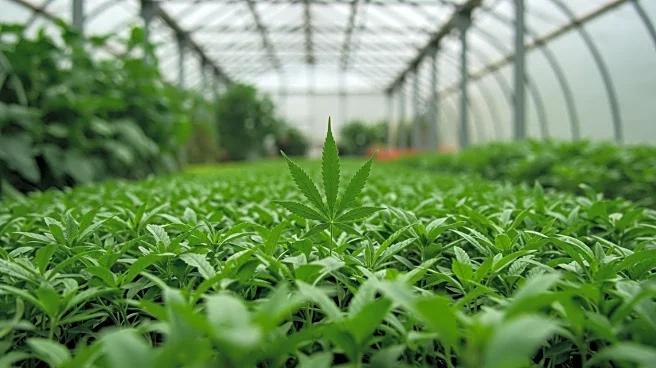What is the story about?
What's Happening?
The agriculture antibacterial market is projected to experience significant growth, driven by increasing demand for clean and high-yield produce. Major companies such as BASF, Syngenta, Bayer, Corteva, Nufarm, and FMC are profiled in a comprehensive market study that forecasts a compound annual growth rate (CAGR) of 8.6% from 2025 to 2033. The market is expected to grow from $700 million in 2025 to $1.35 billion by 2033. The study highlights the use of synthetic and biological formulations to combat bacterial plant diseases, with biological antibacterials offering the largest growth opportunity due to sustainable agriculture trends.
Why It's Important?
The expansion of the agriculture antibacterial market is crucial for ensuring healthy crop growth and protecting yields from bacterial diseases. This growth is significant for the agriculture industry, as it addresses the rising awareness of plant pathogens and the demand for organic farming solutions. The market's development could lead to increased investment in agro R&D and integrated pest management (IPM) adoption. However, challenges such as antibiotic resistance and environmental impacts need to be addressed to ensure sustainable growth.
What's Next?
The agriculture antibacterial market is expected to see further advancements in biological antibacterials and nano-formulations. Regulatory shifts and AI-based crop health monitoring may play a role in shaping the market. Companies are likely to focus on strategic agreements, expansions, and new product launches to capitalize on growth opportunities. Stakeholders will need to address challenges related to banned chemicals and resistance build-up to maintain market momentum.
Beyond the Headlines
The market's growth could have broader implications for global food security and environmental sustainability. As demand for organic and high-yield produce increases, the agriculture industry may need to balance technological advancements with ecological considerations. The development of sustainable antibacterial solutions could contribute to reducing the carbon footprint and promoting biodiversity in agricultural practices.
AI Generated Content
Do you find this article useful?











